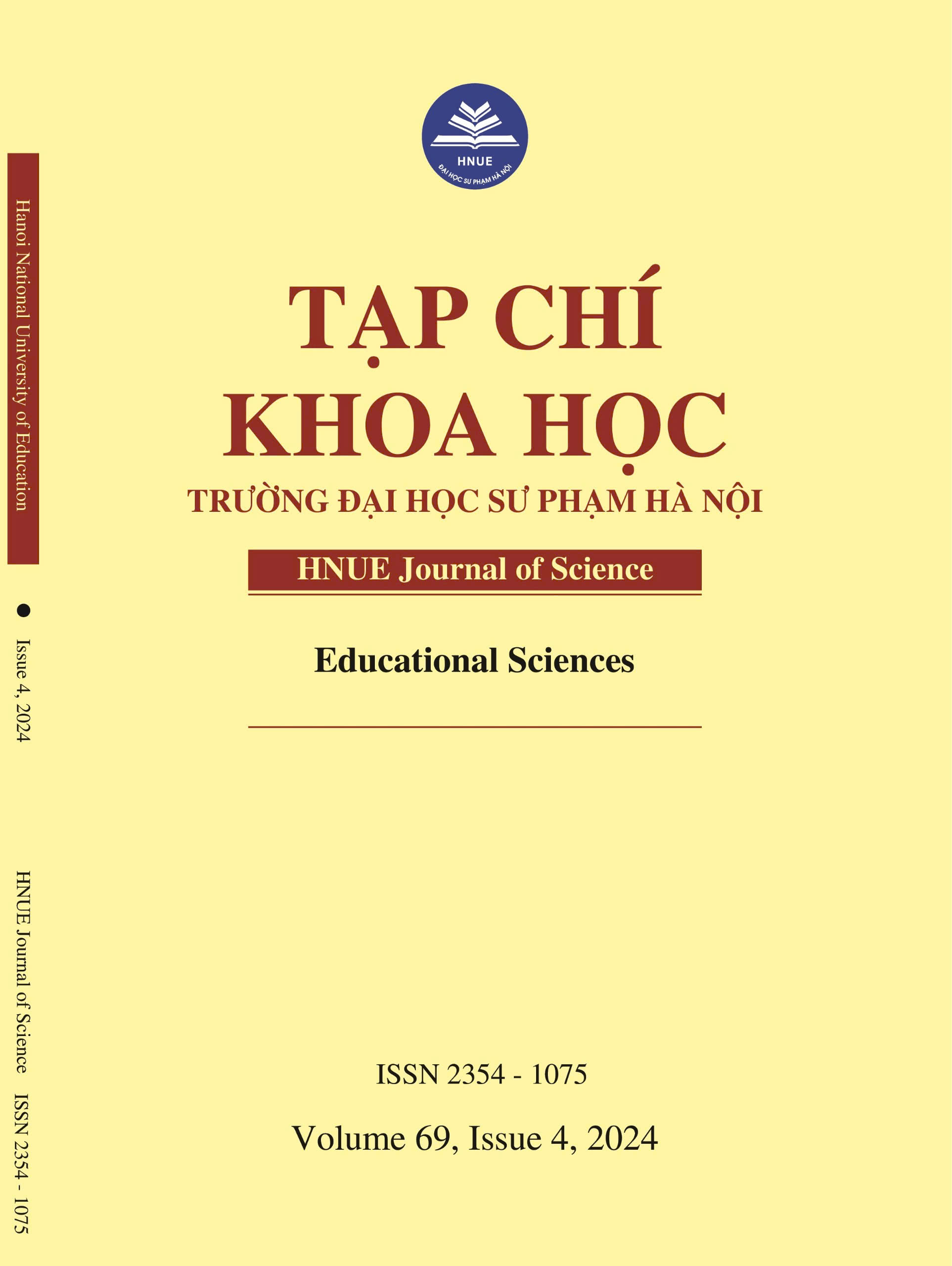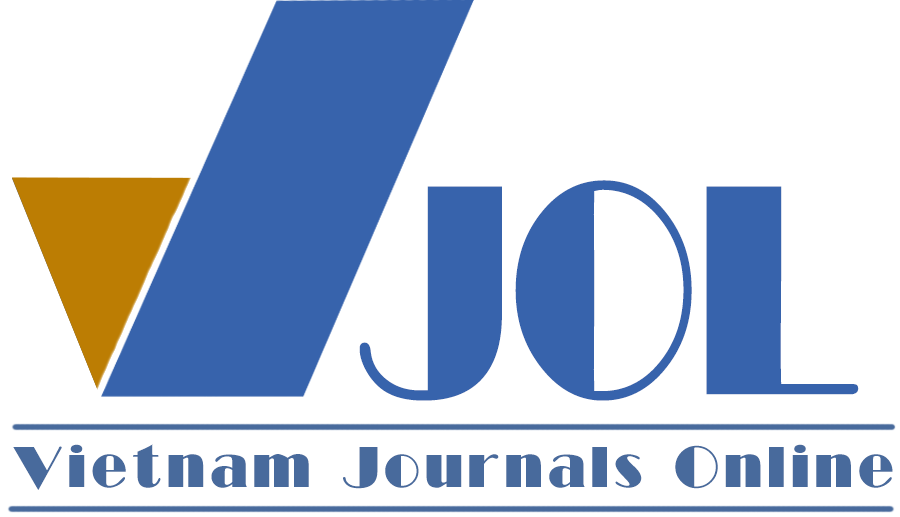DEVELOPING COMPETENCY FRAMEWORK FOR ORGANIZING STEAM EDUCATION ACTIVITIES FOR EARLY CHILDHOOD EDUCATION STUDENTS
DOI:
https://doi.org/10.18173/2354-1075.2024-0068Keywords:
Competency framework, STEAM educational activities, students, early childhood educationAbstract
The ability to organize STEAM education activities plays an important role in preparing students majoring in Early Childhood Education (ECE) to meet the requirements of their training program and the general development trend of modern society. Therefore, the development of a specific STEAM educational competency framework for Early Childhood Education students is an essential step in improving the quality of teaching and preparing for the challenges of the contemporary educational environment. This paper presents constructing a competency framework for organizing STEAM education activities tailored to preschool education students. The article ultimately contributes to supporting schools in establishing and improving training programs, aiming at training preschool teachers capable of effectively organizing STEAM education activities, in response to the increasingly demanding requirements of the education sector.
Downloads
References
[1] Dinh TKT, (2019). “Capacity to organize educational activities of teachers”. Vietnam Journal of Education, 10(3), 45–56.
[2] Awang Z, Yakob N, Hamzah A & Talling MM, (2020). “Exploring steam teaching in preschool using Fred Rogers approach,” International Journal of Evaluation and Research in Education, 9(4), 1071–1078, doi: 10.11591/ijere.v9i4.20674.
[3] JamilFaiza M, Linder, Sandra M, Stegelin, and Dolores A, (2018). “Early Childhood Teacher Beliefs About STEAM Education After a Professional Development Conference”. Early Child Educ J, 46(4), 409–417, doi: 10.1007/s10643-017-0875-5.
[4] Camelia Delia Voicu, Maria Ampartzaki, Zuhal Yilmaz Dogan, and Michail Kalogiannakis, (2022). “STEAM Implementation in Preschool and Primary School Education: Experiences from Six Countries,”.
[5] DC Geary, MK Hoard, L Nugent, and DH Bailey, (2013). “Adolescents’ Functional Numeracy Is Predicted by Their School Entry Number System Knowledge”. PLoS One, 8(1), e54651, doi: 10.1371/journal.pone.0054651.
[6] Brunton P & Thornton L, (2010). “Science in the early years: Building firm foundations from birth to five,” SAGE.
[7] Locuniak MN & Jordan NC, (2008). “Using Kindergarten Number Sense to Predict Calculation Fluency in Second Grade”. J Learn Disabil, 41(5), 451–459, doi: 10.1177/0022219408321126.
[8] Chesloff J, (2013). “Why STEM Education Must Start in Early Childhood”. Educ Week, 32, 32–37.
[9] Jarnette DE & Nancy K, (2018). “Implementing STEAM in the Early Childhood Classroom”. European Journal of STEM Education, 3(3), doi: 10.20897/ejsteme/3878.
[10] Mcclure BE, Clements D, Bales S & Nichols J, (2017). “How to Integrate STEM Into Early”. The Joan Ganz Cooney Center at Sesame Workshop, 8–11.
[11] Park MH, Dimitrov DM, Patterson LG, & Park DY, (2017). “Early childhood teachers’ beliefs about readiness for teaching science, technology, engineering, and mathematics,” Journal of Early Childhood Research, 15(3), 275–291, doi: 10.1177/1476718X15614040.
[12] K Simoncini and M Lasen, (2018) “Ideas about STEM among Australian early childhood professionals: How important is STEM in early childhood education?”. International Journal of Early Childhood, 50(3), 353–369.
[13] Nguyen TH, (2019) “STEM/STEAM education from hands-on experience to creative thinking”. The Publishing House.
[14] Van TMT, (2022). “STEAM education in the organization of educational activities in preschools to meet the requirements of educational innovation”. VJE VietNam Jounal of Education, 22(11), 1–6.
[15] Hoang TP, (2020). “Characteristics of STEAM education for preschool children – the ability to integrate into the preschool education program”. HNUE Journal of Science, 65(11A), 108–116.
[16] Dang UP & Hoang QT, (2020). “The STEAM education capacity of preschool teachers meets the requirements of educational innovation,” HNUE Journal of Science, 65(11A), 125–135.
[17] Moomaw S & Davis JA, (2010). “STEM comes to preschool,” Young Child, 65, 12–14.
[18] Aldemir J & Kermani H, (2017). “Integrated STEM curriculum: improving educational outcomes for Head Start children,” Early Child Dev Care, 187(11), 1694–1706, doi: 10.1080/03004430.2016.1185102.
[19] Le TKL, (20121). Developing information technology capacity in teaching for pedagogical students at universities. Ph.D Dissertation. Hanoi National University of Education, Hanoi, Vietnam.
[20] United Nations Educational Scientific and Cultural Organization (UNESCO) the Education Department of the Education Organization, the Regional Office for Asia and the Pacific (UNESCO Bangkok), the Secretariat of the Organization of Ministers of Education in Southeast Asia (SEAMEO), “Competency Framework for Early Childhood Teachers in Southeast Asia.”
[21] Coolman & Trina, (2014) “Michigan core knowledge and core competencies for the early care and education workforce”.
[22] Ministry of Education and Training, (2018). “Circular 26/2018/TT-BGDĐT Professional standards for preschool teachers”.







